Conversation with Danielle Fretwell
Interview with the recipient of the May edition of MyMA Artist Grant, Danielle Fretwell.

Thank you so much for joining us today, Danielle! Congratulations on being the recipient of the May edition of the MyMA Artist Grant. We're very happy to have you! I was wondering if you could tell us a bit about yourself and your practice?
I am a painter currently living and working in the greater Boston area. I received my MFA from Boston University in 2021, and my BFA from Endicott College in 2018. My paintings center around the ideas of accessibility, process, and time. I would say that most decisions I make in a painting, whether it’s the subjects I depict or the methods in which I handle paint, they're all sort of centered around a personal concern for time.
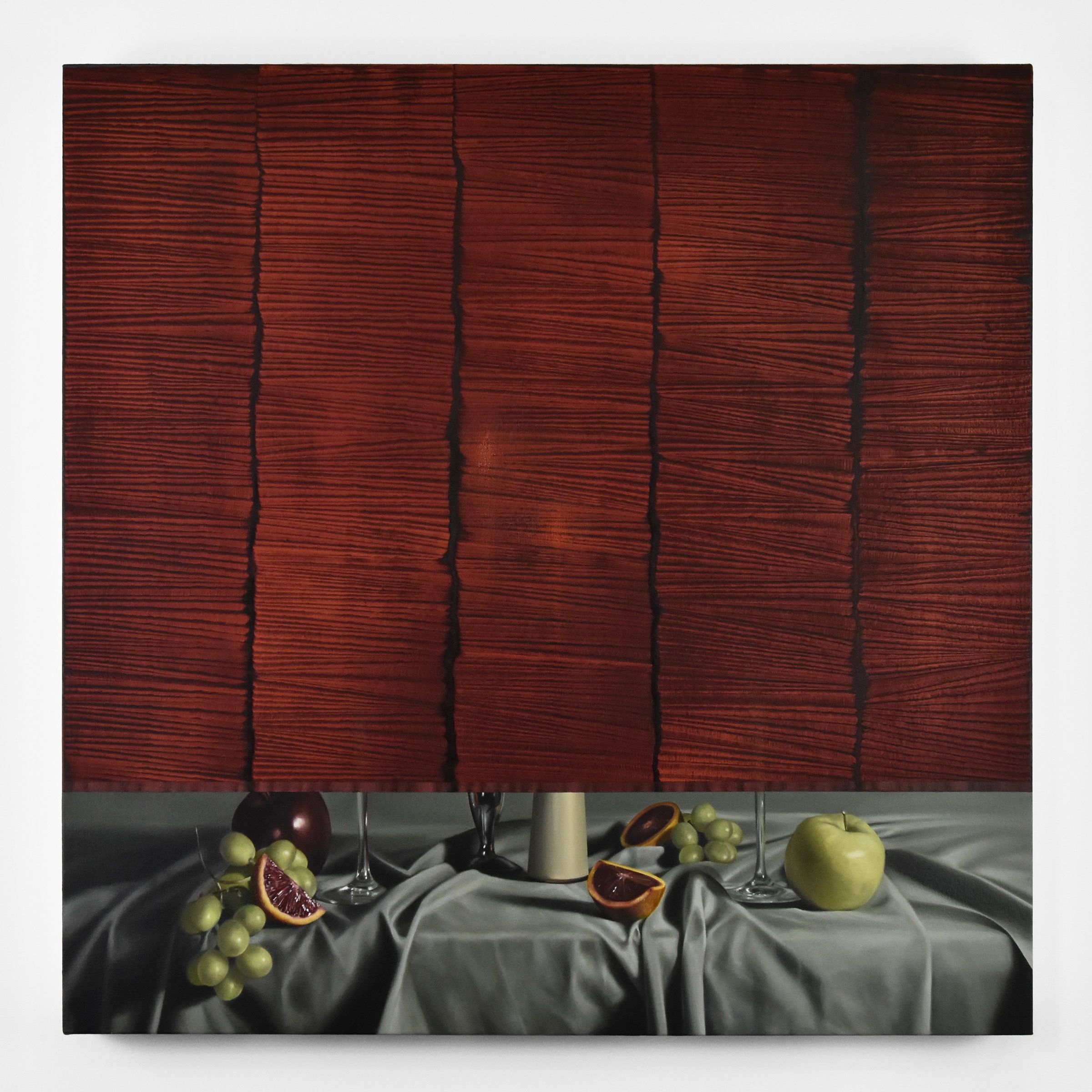
A concern for time in what way?
Time passing, not having enough of it. This idea of temporality and of the fleeting moments. I am drawn to still life paintings a lot for their awareness of time.
We both had birthdays recently. So I'm sure the whole idea of time is really on the mind, especially now.
Exactly. I'm 27 now. The fact that I graduated grad school two years ago but it feels a lot more recent than that. I’ve reflected a lot on what the past few years have been like, finding my footing and trying to figure everything out.
What was grad school like for you?
My experience in grad school was great. I mean, I was a first year in the program when COVID started, so we were removed from our studios and that was tough. We had to switch to painting in our apartments and all our classes and crits were through Zoom. We were only able to see each other's work online for like six months. I think that really informed the trajectory of my work now, where I'm really interested in this demand that you have to witness a painting in person to fully digest what's happening on the surface. Because I just don't think seeing a painting on a screen is enough.

I completely agree with that. I've only seen your paintings online but I want to see them in person one day. But from what I could tell from photos of your work online, texture plays a huge role in your paintings. There's a woodgrain that appears multiple times and contrasts with these human made materials, such as the leather of a restaurant booth. Can you tell us a bit about what draws to these organic or inorganic textures?
Lately with each painting, there's been a balance between the immediate and the slow. There's a way of working more traditionally where I approach paint with tiny brushes for fine detail and I build the image that way. On the opposite side of that there's this process where I use found objects in the studio in this sort of printmaking method where I am able to achieve texture through fabric sheets, plastic, or foam. I think creating texture in that way is very important when it is juxtaposed with the mimetic representation.
Interesting, so you're actually using a printmaking technique, tapping it on.
Yeah, and going back to my relationship with time, the tight rendering is where the slowness occurs. And that’s set against the rapid unpredictability of using these printmaking techniques to create the rest of the image.
It almost acts as a divider in your painting too, there's a very sharp line between the fast and slow.
Right. It's about privacy and accessibility as well.
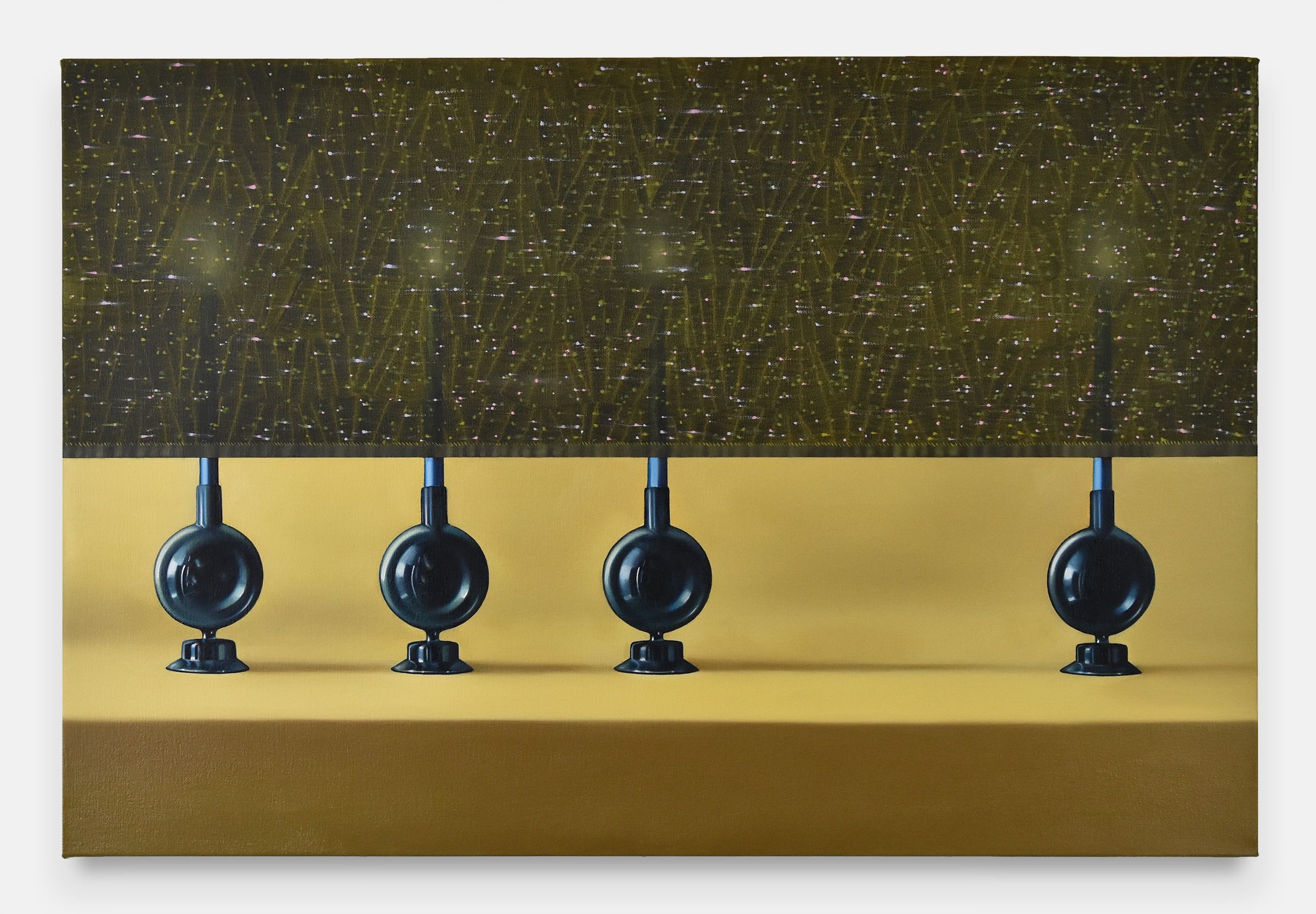
Sort of questioning how much is shown versus how much is not shown? Many of your paintings have this sort of visual division within them. What does it represent for you?
I think, again, the pandemic had a lot to do with that. Also, in my own coming of age and having a growing interest in politics. That anxiety for the truth trickles down into everyday life, like social media and the information that I'm constantly consuming. It feels like there is a barrier of how much I'm supposed to know or what I am allowed to have access to. As a person, too, I am quite private. I think that gets reflected in the work through the areas in which I use the printmaking techniques. I understand the process and how it was made, but the viewer may not. I enjoy that complication.
I love it. How do you start a painting?
It always starts with color, and usually something from a previous painting that never quite worked out. I have a folder in my phone of random, obscured images I’ve taken where colors are interacting in interesting ways. I pull from that folder when I start a new painting and make a loose sketch from there. When the painting is "finished" it usually ends up looking nothing like the original idea I had in mind. That’s the part of my process I’m uncomfortable with, the lack of control over the result. Leaning into the failure part. Which is why I have to work on multiple paintings at the same time so I can hop around when something isn’t working. It takes the pressure off an individual painting to do everything I want it to.
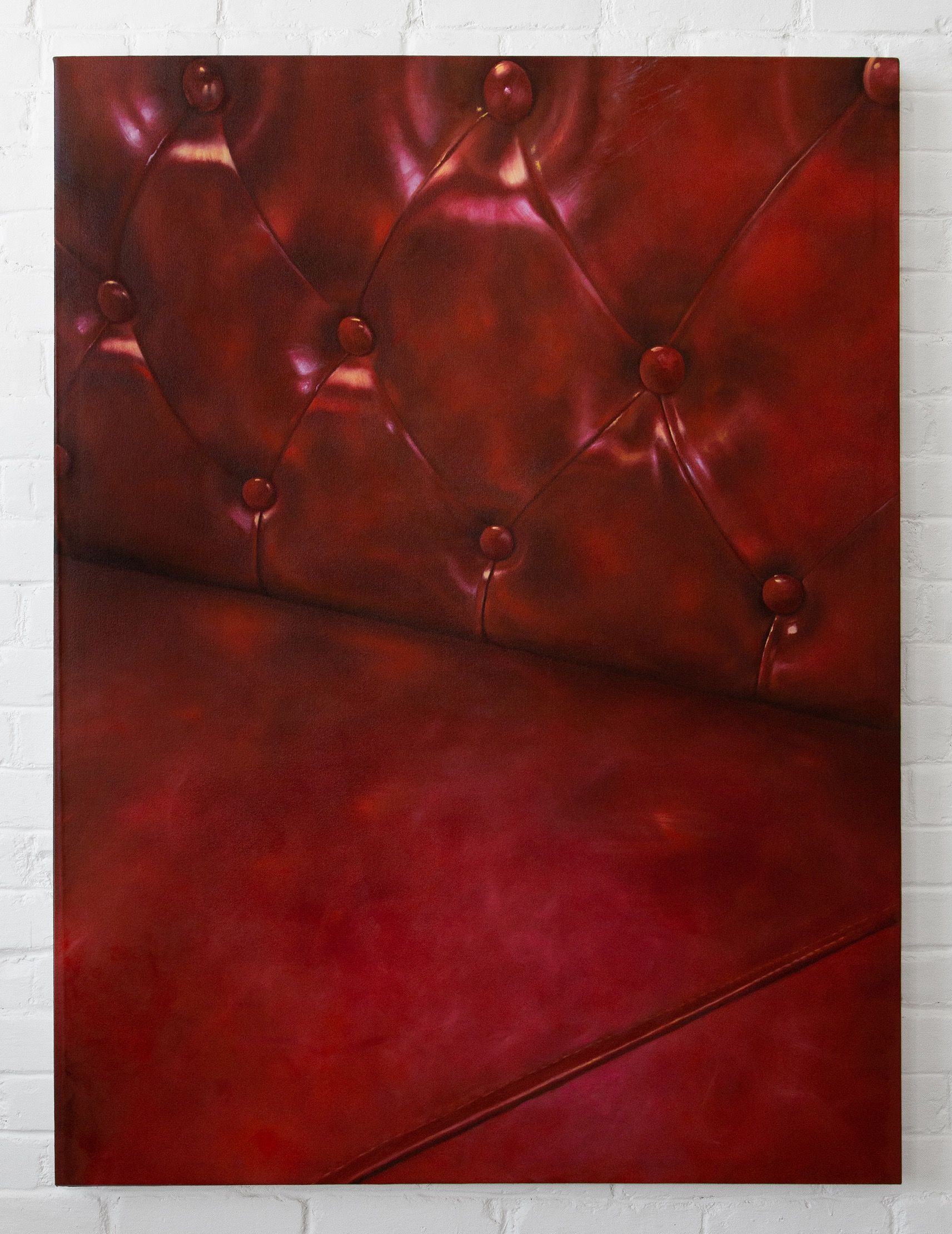
Makes a lot of sense. What are you listening to in the studios these days?
I just finished the first season of Julia Louis Dreyfus’s new podcast called "Wiser Than Me," where she interviews female celebrities who have reached their 70s, 80s, or 90s. It's all about advice you would give to your younger self, things they wish they did differently. And I feel like that's really important for me to listen to as I enter my late 20s. I end up crying by the end of almost every episode.
I'm definitely adding that one to my list now.
It's very good. I also listen to jazz music when I am alone in the studio. The rhythm helps me forward in a painting sometimes.
That totally makes sense. What's the best advice you've received thus far? And who was it from?
Josephine Halvorson reminded my class in our final seminar of grad school that this is a time to go easy on ourselves, and not to be discouraged when opportunities aren’t coming our way. I've had to think about this a lot, the fact that I have to depend on another source of income outside of painting in order to live. You know, forgiving myself for not being in the studio as much as I want to be because of work. And allowing myself time to adjust to life’s changes. I think that's been the most relevant advice that I've received so far.
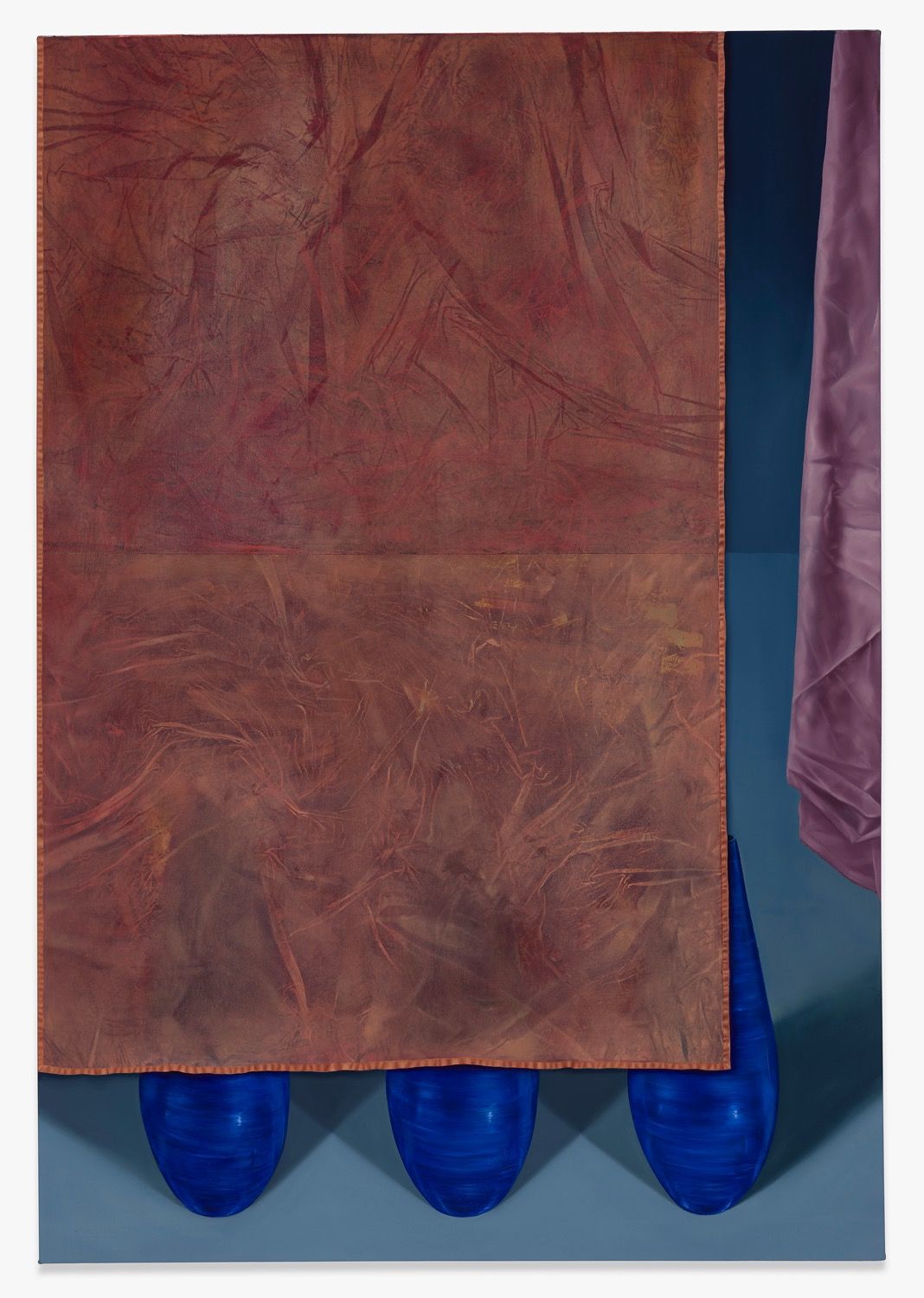
That's really great advice and also very prevalent for so many people. Do you have any art rules you set for yourself or guidelines that you follow when you're in the studio?
I have to learn to put the day behind me. I don't think I'm going to be very productive if I'm bringing in any sort of baggage. Being an artist can demand a lot of alone time and when I'm sitting and painting, I don’t want my mind wandering beyond that space.
That's very true, and a great way to think about it. How do you spend your time outside the studio?
My partner and I have two dogs, so I spend much of my time with them. I enjoy being outside and staying active as much as possible. I also try to read every night.
What are you reading?
I am about to finish "I'm Glad My Mom Died" by Jennette McCurdy. I used to watch her on Nickelodeon when I was growing up. Her story is both devastating and fascinating, the way that she can transform deeply rooted childhood trauma into humor.
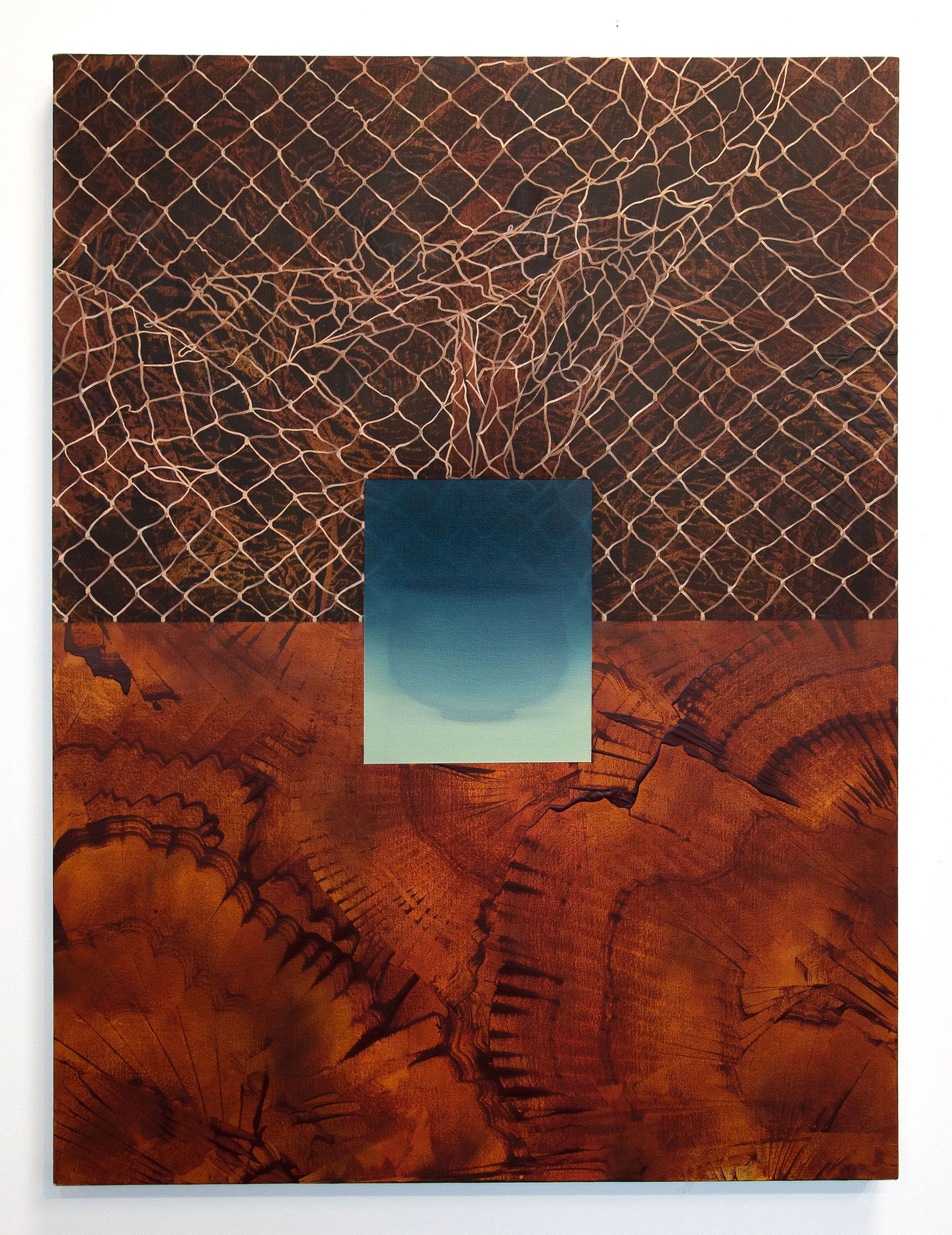
What artists are you looking at right now?
I study a lot of Dutch still life paintings and painters from the 16th and 17th century. Some contemporary artists I have a long-time affinity for are Tauba Auerbach, Catherine Murphy, Gerhard Richter. Also, I was in London recently and was able to catch Sasha Gordon's solo show at Stephen Friedman. I felt so lucky to stand in front of her paintings for the first time and witness the level of detail and color complexity that she achieved in those paintings. My phone camera was struggling to capture it. I love when that happens, further emphasizing the need to see art in person.
Fun last question. What's your go-to karaoke song?
Before He Cheats by Carrie Underwood.